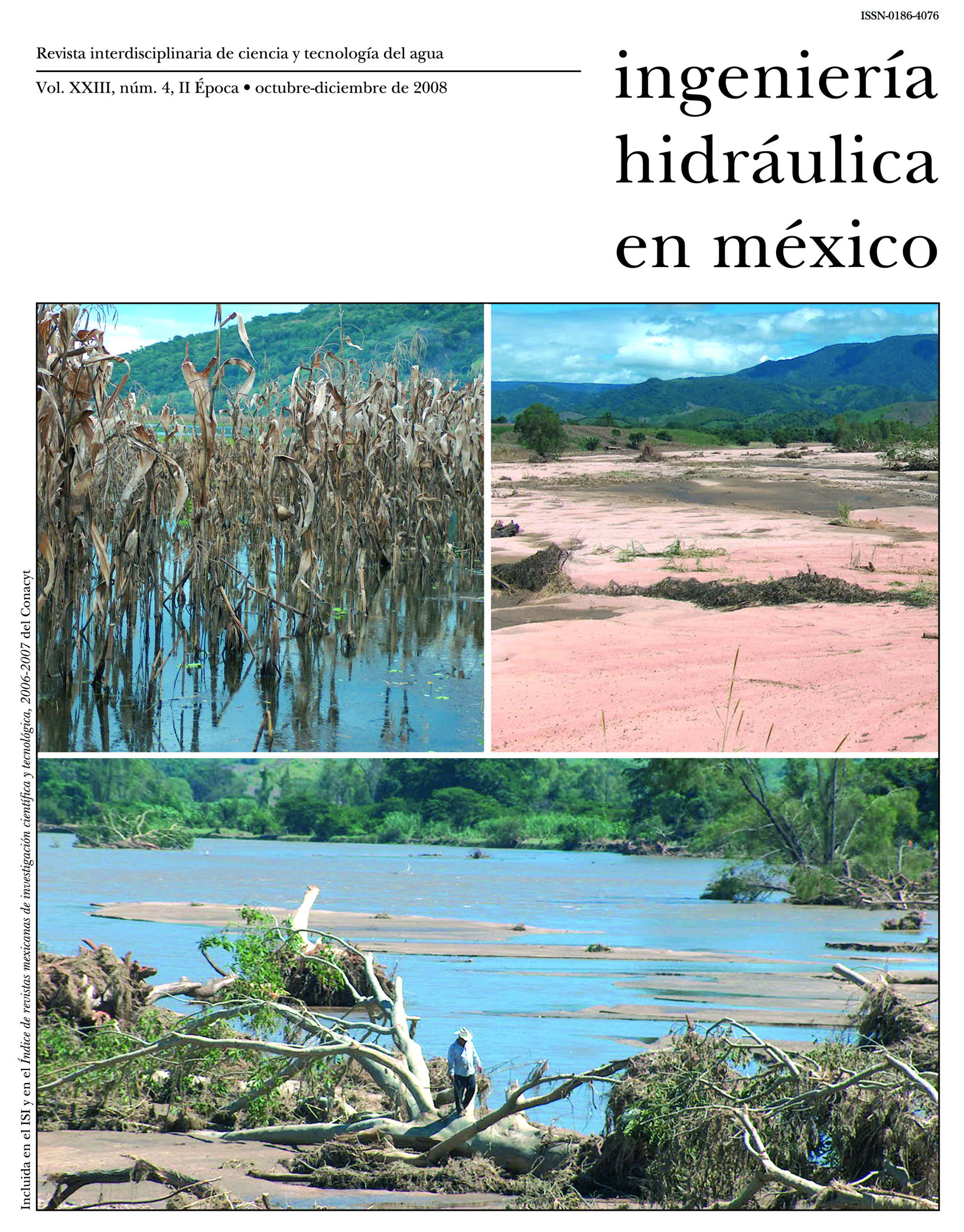Porous emitter irrigation: characterization and simulation.
Keywords:
irrigation, porous emitter, hydraulic conductivity, Monte Carlo's simulation, fractals.Abstract
Porous emitters are proposed as an alternative irrigation system for arid and semiarid regions. A detailed home-made production line of porous emitters is described. Two materials with different proportions of sand, clay, and silt were tested. Material A (61.7% sand) showed lower coefficients of variation in topology (compaction and connectivity) than material B (46.7 %) with 2.6%. A morphological method was performed to estimate emitter porosity; however, microscopic effects influence emitter porosity. A comparison of three different methods to assess porous emitter saturated hydraulic conductivity (Ks) was performed. Monte Carlo's simulation of the fractal porous space and head constant permeameter showed similar results in computing Ks. Marshall's method underestimates Ks in both materials in spite of material 1 having a more homogeneous particle distribution. It was stated that Ks is an important parameter for designing porous emitter irrigation. Finally, emitter-soil iteration was simulated by using Hydrus 2D for three different soil textures and three operation heads. Heavy soil texture treatment presented a smaller wetted diameter, however, low water content differences were found for different operation heads close to the emitter.Downloads
Published
2008-01-01
How to Cite
Perea Estrada, H., Oleschko Lutkova, K., Ramírez Luna, J., & Ruiz Carmona, V. (2008). Porous emitter irrigation: characterization and simulation. Tecnología Y Ciencias Del Agua, 23(4), 189–204. Retrieved from https://www.revistatyca.org.mx/index.php/tyca/article/view/129
Issue
Section
Articles
License
By Instituto Mexicano de Tecnología del Agua is distributed under a Creative Commons Attribution-NonCommercial-ShareAlike 4.0 International License. Based on a work at https://www.revistatyca.org.mx/. Permissions beyond what is covered by this license can be found in Editorial Policy.









